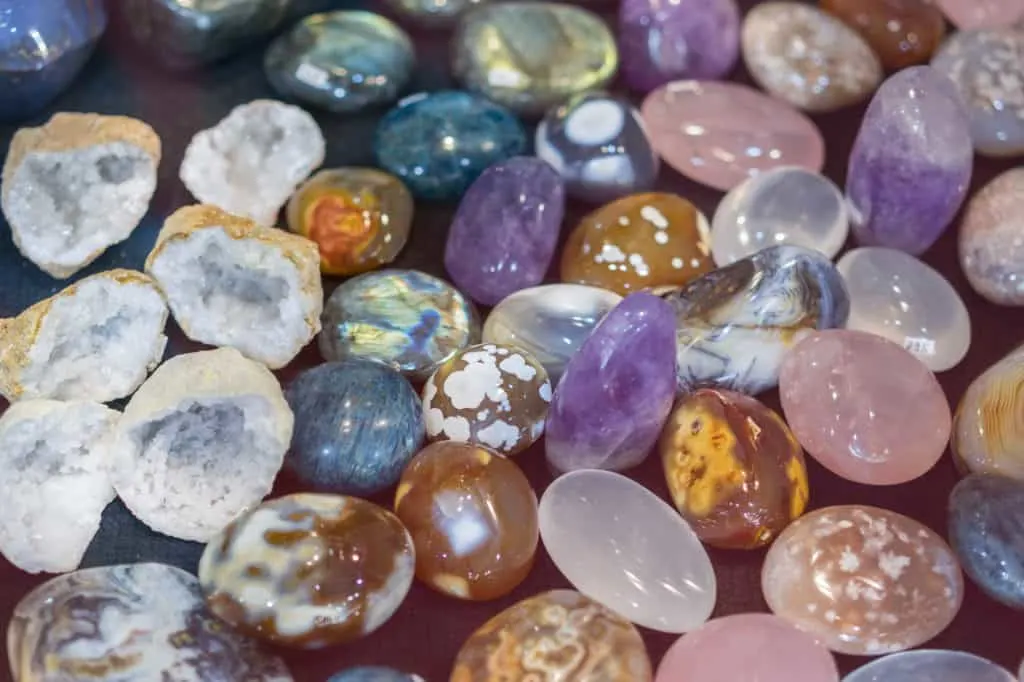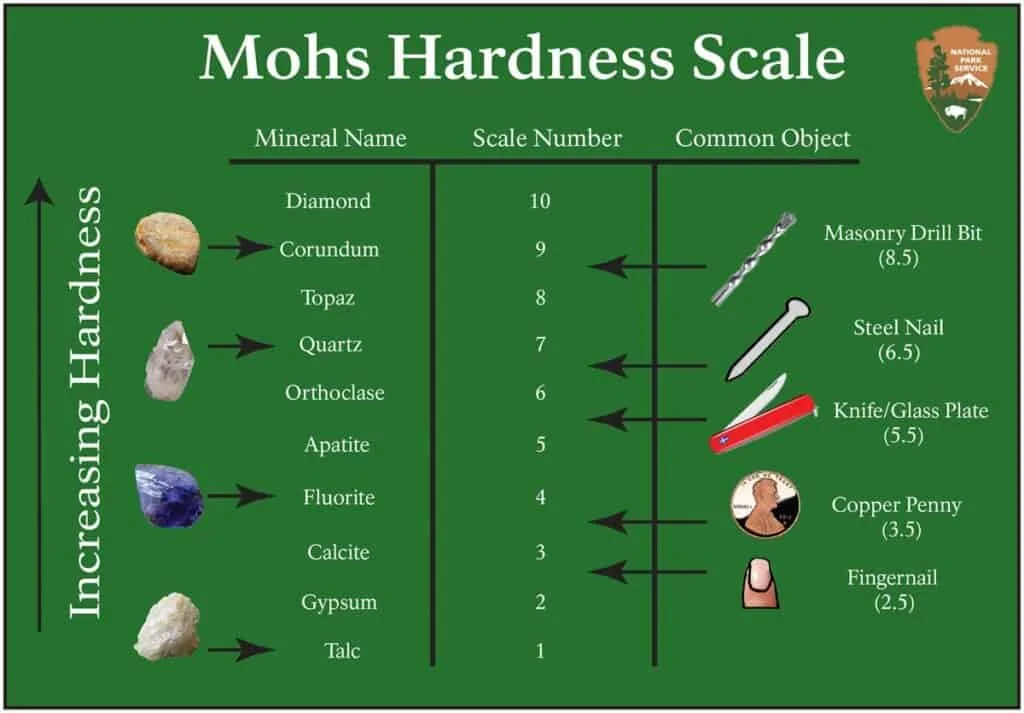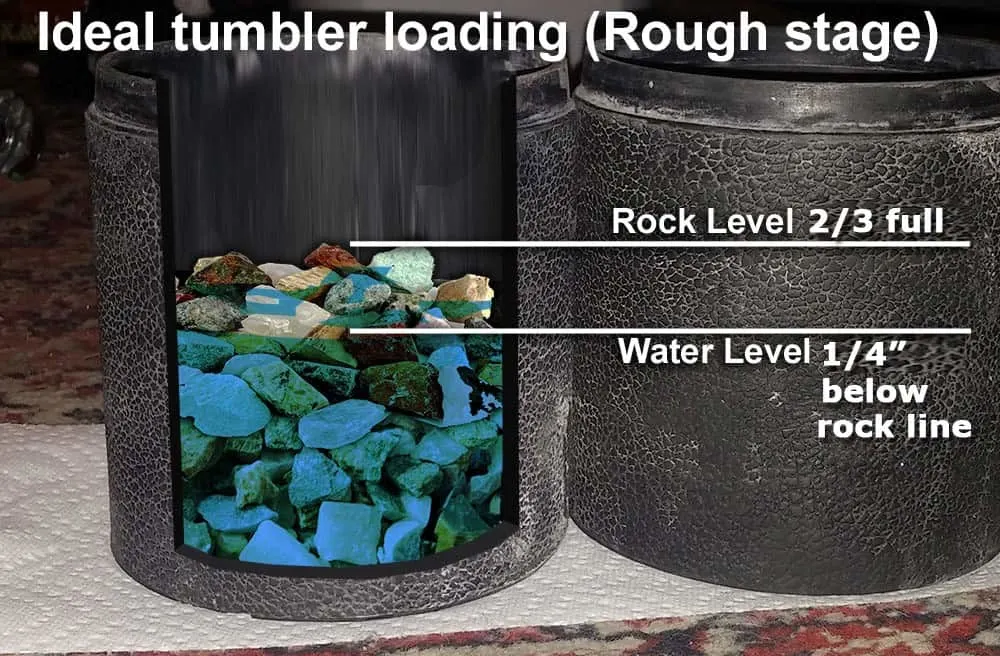As an Amazon Associate, I earn from qualifying purchases with no additional costs for you.
Curiosity often arises among beginners and seasoned professionals alike in rock tumbling: Which rocks can tumble together? It’s a question that draws curiosity and encourages research into these interesting hobbies.
As it happens, not every rock can be tumbled in a rock tumbler. Choosing rocks from the same geological family is crucial. This guarantees structural and compositional consistency, which improves tumbling process outcomes. It’s also important to consider your specimens’ Mohs scale hardness. Similar hardness levels in rocks increase the likelihood of uniform abrasion, producing a smoother and more consistent finish.
Additionally, the size of the rocks you select determines a big part of the tumbling process. Selecting comparable-sized rocks encourages equal abrasion and aids in keeping the tumbler balanced. In addition, choosing the appropriate tumble rough—such as grit and polishing compounds—is crucial to getting the desired results.
Keeping these things in mind, I provide a thorough list of rocks that tumble well together and advice on when and how to tumble them. There’s always something new to learn and appreciate in rock tumbling, regardless of your experience level.

If you want to check out the best rock tumbler made by National Geographic, you can find it here (Amazon link).
What Rocks Can Be Tumbled Together
As previously mentioned, rocks with similar Mohs hardness levels are generally suitable for tumbling together. However, there are some important considerations to keep in mind, which we’ll delve into in this section.
The most common tumbled rocks can be categorized into 12 primary groups based on their Mohs hardness.
The first group encompasses the captivating chrysocolla, also known as eilatite. With a hardness ranging between 2 and 7, it’s essential to exercise caution when considering mixing it with other rocks in the tumbler.
Moving on to the second group, we find calcites such as blue and orange. With a Mohs hardness of about three, these stones can generally be tumbled together safely, although periodic checks are advisable. Similarly, marble, with a Mohs hardness of 3, falls into this category.
| Specimen | Mohs Hardness |
|---|---|
| Blue calcite | 3 |
| Orange calcite | 3 |
| Marble | 3 |
The third group is dedicated to the rocks with Mohs hardness between 3.5 and 5.
| Specimen | Mohs Hardness |
|---|---|
| Magnesite | 3.5 |
| Indigo gabbro | 4 – 5 |
| Fluorite | 4 |
| Apatite, Blue Apatite | 5 |
All of the specimens above can indeed be safely tumbled together. Classified as soft rocks, they typically require only a few days to reach the polishing stage.
Now, moving on to the fourth group, we encounter obsidian. This particular rock is placed in a separate category due to its unique properties. Obsidian is notably fragile and prone to splitting into sharp chips during tumbling. Consequently, it’s advisable to tumble obsidian separately to avoid any potential damage or injuries caused by its sharp edges.
| Specimen | Mohs Hardness |
|---|---|
| Obsidian | 5 – 5.5 |
| Snowflake obsidian | 5 – 5.5 |
| Apache tears | 5 – 5.5 |
Another notable group is the tiger’s eye family of rocks. The best results are obtained if these stones are tumbled together.
| Specimen | Mohs Hardness |
|---|---|
| Tiger’s Eye | 5.5 – 6 |
| Red Tiger’s Eye | 5.5 – 6 |
| Gold Tiger’s Eye | 5.5 – 6 |
The sixth group comprises rocks with an average of 6.06 Mohs hardness that can be safely tumbled together.
| Specimen | Mohs Hardness |
|---|---|
| Green Opal | 5.5 – 6 |
| Hematite | 5.5 – 6 |
| Rhodonite | 5.5 – 6.5 |
| Amazonite | 6 |
| Labradorite | 6 – 6.5 |
Feldspars have a hardness of 6 – 6.5 and can be tumbled together but will require a longer time.
Group 6 features harder rocks, up to 7 on the Mohs scale.
| Specimen | Mohs Hardness |
|---|---|
| Petrified wood | 6.5 – 7 |
| Jasper | 6.5 – 7 |
| Agate | 7 |
| Carnelian | 7 |
| Quartz | 7 |
| Chalcedony | 7 |
Many specimens of this group are tumbled together. Larger chunks of quartz require a ceramic tumbling media, though. Jasper and agate are recommended for beginners as they have a satisfying luster.
The banded amethyst has a Mohs hardness of 7 and requires separate tumbling due to its fragile nature. The same goes for large specimens of rock quartz, clear quartz, crystal quartz, or rose quartz.
Going up on the Mohs scale, it becomes more challenging to tumble rocks due to their hardness. For example, diamonds at ten on the Mohs scale can’t be smoothed as no grit can grind them.
BTW: Do you want to know more about rock and mineral identification? The books listed below are the best ones you can find on the internet (Amazon links):
- Smithsonian Handbooks: Rocks & Minerals
- Gemstone & Crystal Properties (Quick Study Home)
- Ultimate Explorer Field Guide: Rocks and Minerals (National Geographic Kids)
What To Take Into Consideration When Tumbling Different Rocks Together
There are five things to consider when tumbling different rocks together: their Mohs hardness, size, rock family, tumbling rough & grit, and the rocks’ quality.
Once you learn how to pick the right rocks for tumbling, nothing can stop you from turning rough stones into stunning shiny gems.
Rock Quality
Ensuring the quality of your rock specimens is paramount in the tumbling process. Voids and pore spaces within the rocks can significantly impact the outcome, potentially leading to coarse-grit scratches that mar the polished surface.
Furthermore, it’s crucial to inspect the rocks for any fractures. Even the tiniest cracks can prove detrimental, causing the rocks to split into smaller parts during tumbling. These fragments can then scratch the polished stones, compromising the overall finish.
Lastly, the texture of the rocks plays a crucial role in the tumbling process. Rocks intended for polishing should possess a smooth texture to minimize the production of granular debris. Any rough or jagged surfaces can result in abrasive particles that scratch other stones within the tumbler’s barrel, detracting from the desired outcome.
TIP: Rock tumbling can be quite time-consuming. That’s why knowing how long tumbling takes for various rocks and minerals is always good. Find out more in the article below:
How Long Does It Take To Tumble Rocks? Values For Various Rocks
Mohs Scale Hardness
Each specimen has a hardness level, generally measured by the Mohs hardness scale. When tumbling different rocks together, their hardness should be on the same level.

Anything below seven on the Mohs scale is considered a soft material. You can measure a rock’s hardness by using a Mohs Test Kit (available online).
Another method would be to scratch the rock’s surface with an object of a certain hardness, such as your fingernail, a copper penny (new pennies are made of zinc, so try to find an old copper coin), obsidian, knife blade, steel file, or a piece of quartz.
| Object | Mohs Hardness |
|---|---|
| Fingernail | 2.5 |
| Copper Penny | 3.5 |
| Obsidian | 5 |
| Knife Blade | 5.5 |
| Steel File | 6.5 |
| Quartz | 7 |
If the object you use is scratching the rock, you know the hardness of that particular stone.
Any rock with a hardness of 5 to 7 will take a nice polish. Harder rocks will have a gloss finish, while softer stones will get smooth and rounded without polish.
TIP: If you are interested in buying a Mohs hardness test kit, I wrote an article about the best 3 Mohs test kits where you will find all the information you need before the purchase. Find out more in the article below:
3 Best Mohs Scale Test Kits: Test the Hardness of Your Gemstones
Size
Size is also significant when it comes to tumbling. It also affects the time in which your stones are done tumbling.
If you try to tumble specimens of the same size, the whole process will last longer, and the results will not be satisfying.
As a general rule, always consider the size of your tumbler, and make sure you choose rocks of different sizes. Larger specimens require an extended tumbling time, so it is better to avoid them. If you want to learn more about how long tumbling takes, check it out here.
Rock Family
Probably the safest way without getting any tool kits to tumble different rocks together is to make sure they are of the same family. For example, blue and orange calcite go well together; they have the same hardness levels.
Another example is the obsidian family, which includes regular obsidian, snowflake obsidian, and Apache tears.
Tumbling Rough & Grit
Even if you are an amateur or professional, you may not find rocks in the area where you’re living. But this is not an issue, and you can still tumble rocks. All you need to do is to purchase some tumbling rough.
Moreover, even if collecting rocks can be fun, it is more economical to purchase the tumbling rough. If you want to tumble a specific material, such as malachite or lapis lazuli, buying the specific tumbling rough is more comfortable than waiting to collect a fair amount of rocks.

Grit is also very important in rock tumbling; you should choose the right one for your specimens. Silicone carbide grit, for example, has a Mohs hardness level of 9, and it works excellent with jasper, for instance.
Choosing the Right Tumbling Rocks
Tumbling rocks takes a lot of time, patience, and electricity. It is essential to choose the right rough material.
Some of the rocks commonly tumbled nicely are jasper, agate, moonstone, laps lazuli, obsidian, petrified wood, amethyst, tiger’s eye, or other varieties of quartz.
However, not every type of rock is suitable for tumbling. As a beginner, it is better to stick to quartz and agates.
A useful piece of advice is to use rocks of the same hardness. As for the size, although it is recommendable to tumble rocks of different sizes, try to avoid stones that are too big (over 3 inches).
The rocks you will toss into the tumbler should not have deep cracks or voids. The unusually shaped stones are also a no.
TIP: As stated above, not all rocks are good for tumbling. That is why I summarized the list of the best 15 rocks for tumbling. Check out the best rocks for tumbling below:
What Rocks Are Good For Tumbling? 15 Best Rocks & Minerals
Can I Tumble River Rocks?
River rocks can be tumbled, and the results are amazing. Polished river rocks are used in home decorating or as massage stones.
Tumbling these stones takes a long time, which is determined by the rocks’ hardness.
The tumbling process requires a standard rock tumbler. The stones can also be altered to your preference by alternating the grit’s size and the duration of the tumbles.
Conclusion
Collecting rocks is an enjoyable way to spend your leisure time, but tumbling the rocks you’ve gathered adds an exciting dimension as you uncover their hidden beauty.
Before diving into tumbling, it’s crucial to grasp some basic principles to ensure more satisfying results. Understanding these fundamentals enhances the overall experience.
In most cases, rocks of similar hardness levels can be tumbled together, simplifying the process. However, certain rocks may necessitate special attention and additional tumbling time to achieve optimal results.
Rock tumbling is a captivating hobby offering a deeper appreciation for the natural world. As you become proficient in this craft, you’ll develop a newfound admiration for the inherent beauty found within rocks and minerals.
TIP: You know what rocks can be tumbled together. But do you have any idea what to do with tumbled rocks? Check out these simple and clever ideas in the article below:
What Can You Do with Tumbled Rocks? 10 Simple & Clever Ideas
